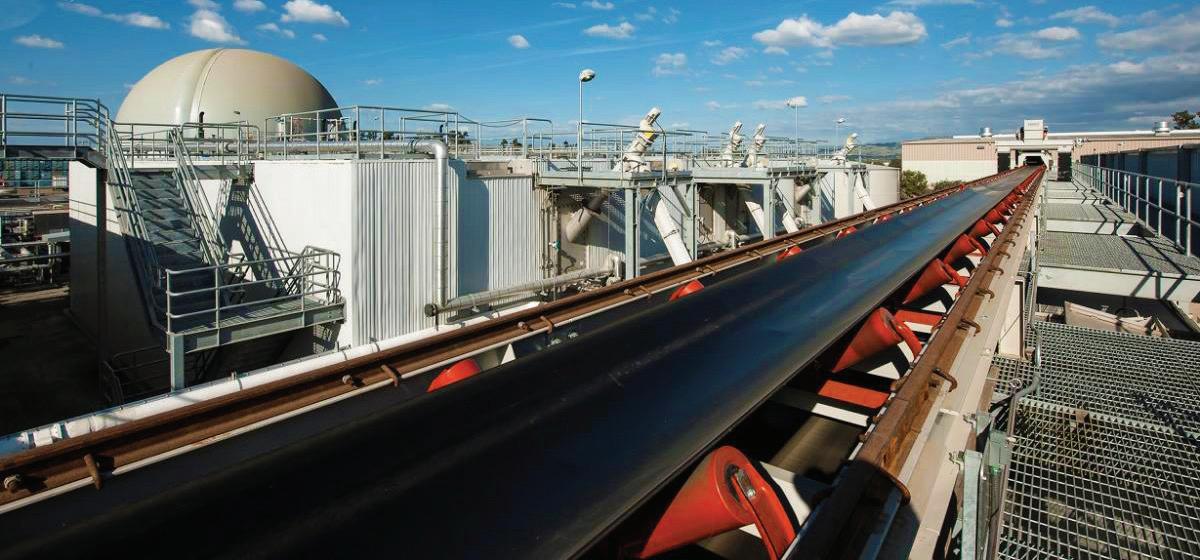ÂŚFEEDSTOCK LOGISTICS
Chautauqua County Straw/Hay Production Capacity
At typical straw combustion facilities, material is consumed evenly throughout the year, but storage facilities typically only accommodate three to five days’ worth of fuel. PHOTO: JOSEPH TECHNOLOGY CORP.
STRAW FOR ENERGY GENERATION IN CHAUTAUQUA COUNTY A research project in Chautauqua County, New York, investigates the feasibility of straw/ hay-to-energy facility development.
T
BY ISHAI OLIKER
he technology of straw/hay production and combustion is well developed and has been used for many years in Scandinavian countries, particularly in Denmark, where there are more than 8,000 small and large strawfired heating plants collectively consuming more than 1.5 million tons of straw. A study was conducted to investigate the opportunity to create a reliable and cost-effective source of straw and hay fuels for heat and power generation at a farm in Chautauqua County, New York. The following is an excerpt from a detailed report available upon request.
Chautauqua County farmers generate limited amounts of straw used for bedding and other needs. The straw is produced from growing mostly oats, as well as barley and wheat. These farmers have land and equipment necessary for production of low-quality hay for combustion in power and heat generation plants. It is estimated that the farmers can produce low-quality hay in the annual amount of 440,000 tons. This would supply fuel for power generating facilities with a capacity of 90 MW. Farmers in the area are very interested in producing and supplying hay fuel at prices ranging from $4 to $5 per MMBtu. Most produce hay, with individual farm field crop production size ranging from 29 to 2,000 acres. Typically, two cuttings of hay are performed each year. Both round and square bales are produced by the farmers, with round being less costly to produce at 35 to 1,000 lbs. Square bales can range from 1,000 to 2,000 pounds. Production capacity of hay is 3 to 4 tons per acre. Based on information provided by the farmers, the average farm gate cost of growing and harvesting hay is estimated at $52 per ton ($3.25 per MMBtu). Farmers, owning or renting the harvesting equipment, indicated that if profitable, they could produce all the hay needed. A majority is interested in using the ash from the combustion facility on their farms.
Collection, Transportation and Storage
Baling and transport. Baling capacity depends on the choice of technology. The baling capacity that includes all operations connected to baling is lowest when the straw/hay is baled by a small and round baler, and it is the highest when using a big baler. When transporting straw/hay, various techniques and methods are used depending on the local conditions. Small bales are loaded in the field by bale fork, bale loader, bale chute or bale gun. At the farm, bales are unloaded directly into the storage or an elevator or bale conveyor. Flat cars or special V-shaped vehicles are used. They will contain 75 to 250 bales. Round bales are loaded by front-end loader, loader tractor or a trencher. The same machinery is used for unloading into storage. For transport, trucks or truck trailers are used, but also ordinary farm trailers or specially designed vehicles. Usually, the tractor is only towing one trailer, and it will contain from 8 to 14 bales. Medium-sized bales are loaded and unloaded by front-end loader, trencher or a loader tractor. The front-end loader is the most used machine for both loading in the field and for unloading in the storage. The size of the loads varies 12 to 45 bales, but most often load will be 24 bales. Big bales are loaded and unloaded by front-end loader, trencher, loader tractor or a telescope loader, which is suitable for unloading because it can reach high up when storing in stacks. The front-end
CONTRIBUTION: The claims and statements made in this article belong exclusively to the author(s) and do not necessarily reflect the views of Biomass Magazine or its advertisers. All questions pertaining to this article should be directed to the author(s).
20 BIOMASS MAGAZINE | NOVEMBER/DECEMBER 2020







